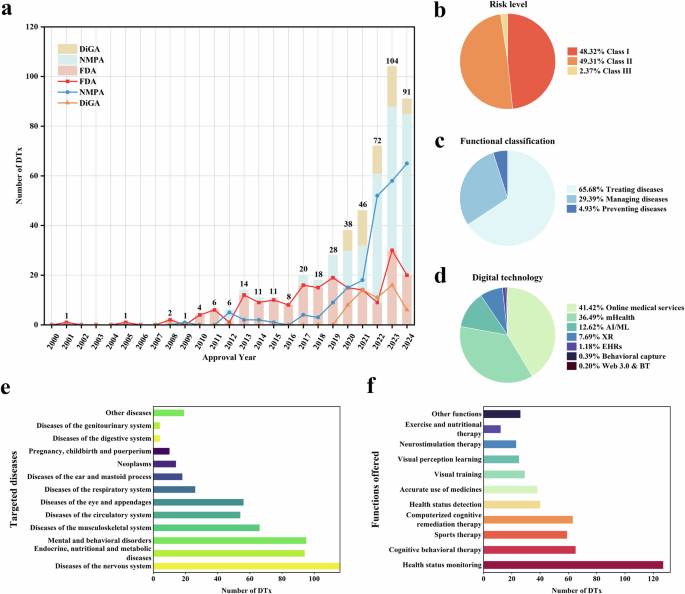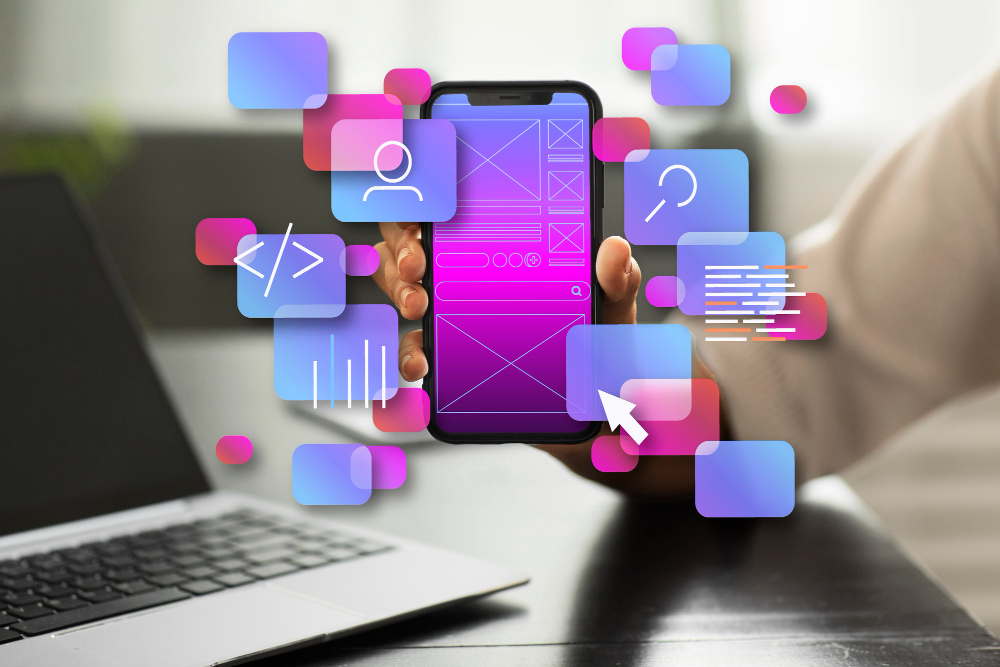North America Mobile Health Market: Adoption of Wearables


The mobile health (mHealth) market in North America has experienced significant growth in recent years, driven by the rapid adoption of wearable devices and the integration of Internet of Things (IoT) technologies. Mobile health encompasses the use of mobile devices such as smartphones, tablets, wearables, and IoT-enabled devices to monitor, manage, and improve personal health. The North American market, particularly the United States, has become a hub for mHealth innovations, with an increasing number of consumers, healthcare providers, and insurers embracing the potential of these technologies.
In this blog, we will explore the size and growth of the North American mobile health market, focusing on the role of wearables and IoT devices. We will also examine the key drivers, challenges, and future prospects of this rapidly expanding market.
𝐆𝐞𝐭 𝐚 𝐒𝐚𝐦𝐩𝐥𝐞 𝐏𝐃𝐅 𝐁𝐫𝐨𝐜𝐡𝐮𝐫𝐞 𝐨𝐟 𝐭𝐡𝐞 𝐑𝐞𝐩𝐨𝐫𝐭 (𝐔𝐬𝐞 𝐂𝐨𝐫𝐩𝐨𝐫𝐚𝐭𝐞 𝐄𝐦𝐚𝐢𝐥 𝐈𝐃 𝐟𝐨𝐫 𝐚 𝐐𝐮𝐢𝐜𝐤 𝐑𝐞𝐬𝐩𝐨𝐧𝐬𝐞): https://www.persistencemarketresearch.com/samples/34511
The Rise of Mobile Health in North America
Mobile health solutions have revolutionized the healthcare sector by empowering individuals to take control of their health, enabling healthcare providers to offer more efficient care, and reducing the overall burden on healthcare systems. The mobile health market has gained traction in North America, particularly with the increased use of smartphones, which are now a central hub for health-related applications and services.
The North America Mobile Health Market is estimated to value at US$181.5 Bn by the end of 2031 from US$38.7 Bn estimated to be recorded in 2024. The market is expected to secure a CAGR of 24.7% in the forthcoming years from 2024 to 2031. This growth is primarily driven by advancements in wearable technology and the increasing adoption of IoT devices for health monitoring.
Wearables and IoT Devices: Key Drivers of Growth
1. Wearable Health Devices
Wearables have become one of the most popular segments of the mobile health market in North America. These devices, which include smartwatches, fitness trackers, and health monitors, have gained widespread consumer adoption due to their convenience, accessibility, and ability to provide real-time health data.
Some key examples of wearable health devices include:
• Smartwatches: Devices like the Apple Watch and Fitbit have become commonplace for consumers looking to monitor their heart rate, track their physical activity, and even measure blood oxygen levels. These devices offer users a way to stay on top of their health in real time.
• Fitness Trackers: Wearables such as the Garmin Vivosmart and WHOOP Strap help users track various health metrics like steps taken, calories burned, sleep quality, and more.
• Health Monitors: More advanced wearables such as continuous glucose monitors (CGMs) for diabetes management, blood pressure cuffs, and ECG monitors enable users to track specific health conditions.
The convenience of these wearables, combined with the increasing trend of self-care and health monitoring, has made them a preferred option for consumers looking to stay healthy. Additionally, the availability of mobile health apps that sync with wearables has enhanced user experience by allowing individuals to track their health metrics over time, access actionable insights, and make informed decisions about their wellness.
2. IoT Integration for Remote Monitoring
The Internet of Things (IoT) has made a significant impact on the healthcare sector, particularly with the development of IoT-enabled medical devices that can remotely monitor patients’ health. IoT devices include a wide range of medical equipment, from remote monitoring devices to connected diagnostic tools.
Some key benefits of IoT in mobile health include:
• Remote Monitoring: IoT devices enable healthcare providers to remotely monitor patients’ vital signs, track medication adherence, and receive alerts when a patient’s condition changes. For instance, connected blood glucose monitors allow doctors to track a diabetic patient’s blood sugar levels remotely, while wearable ECG monitors enable continuous heart rate monitoring.
• Real-time Data Sharing: IoT-enabled health devices can send real-time data directly to healthcare providers, allowing for more personalized and timely care. This not only improves patient outcomes but also reduces the need for in-person visits, making healthcare more efficient and accessible.
• Improved Medication Management: IoT devices can help patients adhere to their prescribed medication schedules by sending reminders, tracking medication usage, and notifying caregivers or healthcare professionals if a dose is missed.
IoT technology, combined with the growing trend of home healthcare and telemedicine, has expanded the market for connected health devices in North America. By enabling remote health management, IoT devices are also improving the quality of care and reducing healthcare costs.
3. Integration with Mobile Health Apps
The integration of wearables and IoT devices with mobile health applications is a key enabler of the mHealth ecosystem. These apps allow users to monitor and track their health metrics, receive insights based on their data, and communicate directly with healthcare providers. The integration of wearables with mobile apps is particularly popular in chronic disease management, fitness tracking, and mental health monitoring.
For example:
• Chronic Disease Management: Wearables and IoT devices connected to mobile apps can monitor conditions such as diabetes, hypertension, and asthma. This real-time data helps healthcare providers offer better care and make more informed decisions about treatment plans.
• Fitness and Wellness Apps: Popular apps like MyFitnessPal, Strava, and Headspace allow users to track their fitness progress, set health goals, and manage their mental wellness.
• Mental Health Monitoring: With the rise of wearable devices that track physiological markers such as heart rate variability, there is growing interest in using wearables and mobile apps to monitor and manage stress, anxiety, and other mental health conditions.
The increasing availability and adoption of mobile health apps are driving the growth of the wearables and IoT device market in North America.
Key Market Drivers in North America
Several factors are contributing to the rapid growth of the mobile health market in North America, particularly the adoption of wearables and IoT devices:
1. Growing Health Consciousness
As awareness of healthy living and preventative healthcare continues to rise, more consumers are investing in wearable devices and IoT devices that allow them to monitor their health. The trend toward self-care and proactive health management has led to an increased demand for mobile health solutions.
2. Rising Prevalence of Chronic Diseases
The increasing prevalence of chronic diseases such as diabetes, heart disease, and obesity in North America is fueling the demand for continuous health monitoring. Wearable devices and IoT-enabled health trackers can provide early warning signs of potential health issues, enabling individuals to take preventive measures and manage their conditions more effectively.
3. Telehealth and Remote Healthcare
The COVID-19 pandemic accelerated the adoption of telehealth and remote healthcare services, creating a growing demand for remote monitoring devices. Patients and healthcare providers are increasingly relying on digital health solutions to monitor chronic conditions, conduct virtual consultations, and manage health data remotely.
4. Technological Advancements and Innovation
Continuous advancements in technology have resulted in more sophisticated, accurate, and affordable wearable health devices and IoT medical devices. Improved battery life, miniaturization of sensors, and better integration with mobile apps have made wearables more practical and appealing to consumers.
5. Supportive Regulatory Framework
In North America, regulatory agencies such as the U.S. Food and Drug Administration (FDA) and Health Canada have created guidelines for the approval of wearable and IoT devices for medical purposes. These regulations provide a clear pathway for manufacturers to bring innovative health devices to market, increasing consumer trust and accelerating market adoption.
Challenges in the North American Mobile Health Market
While the adoption of wearables and IoT devices is increasing, several challenges remain for the North American mobile health market:
• Data Privacy and Security: With the growing amount of health data being collected by wearable devices and IoT sensors, data privacy and security concerns are becoming more prominent. Consumers are wary of how their personal health data is being used and shared, which can limit adoption.
• Integration Issues: The integration of multiple devices and systems into a cohesive mobile health ecosystem can be challenging, particularly when it comes to ensuring data interoperability across different platforms and healthcare providers.
• Regulatory Hurdles: Despite regulatory advancements, the approval process for new health-related technologies can still be slow, and companies may face challenges in navigating the complex regulatory landscape.
The Future of the Mobile Health Market in North America
The future of the North American mobile health market looks promising. With continued advancements in wearable technology, IoT devices, and mobile health applications, the market is expected to continue expanding at a rapid pace. As consumers and healthcare providers increasingly embrace digital health solutions, the integration of these technologies will become an integral part of the healthcare ecosystem.
The market will likely see further innovations, including the development of more personalized and predictive health monitoring tools, the integration of artificial intelligence (AI) for health data analysis, and the expansion of mobile health solutions for mental health and aging populations.
In conclusion, the North American mobile health market is experiencing significant growth, driven by the adoption of wearables and IoT devices. These technologies are transforming the way healthcare is delivered and managed, offering consumers and healthcare providers new ways to monitor, manage, and improve health outcomes. With a robust market outlook, the future of mobile health looks bright, promising better healthcare solutions for all.
𝐄𝐱𝐩𝐥𝐨𝐫𝐞 𝐭𝐡𝐞 𝐋𝐚𝐭𝐞𝐬𝐭 𝐓𝐫𝐞𝐧𝐝𝐢𝐧𝐠 “𝐄𝐱𝐜𝐥𝐮𝐬𝐢𝐯𝐞 𝐀𝐫𝐭𝐢𝐜𝐥𝐞”:
• https://www.linkedin.com/pulse/how-industrial-racking-system-market-evolving-rise-aishvarya-doiphode-gi4uf/
• https://www.linkedin.com/pulse/animal-drug-compounding-addressing-needs-pet-owners-doiphode-tdiwf/
• https://www.linkedin.com/pulse/eeg-devices-market-how-brainwave-monitoring-transforming-l8fif/
• https://www.linkedin.com/pulse/europes-personalized-medicine-biomarkers-market-enphf/
• https://www.linkedin.com/pulse/ship-to-shore-sts-container-cranes-market-innovations-doiphode-vrwif/
• https://www.linkedin.com/pulse/north-america-orthokeratology-market-trends-growth-1tfnf/
• https://www.linkedin.com/pulse/mining-remanufacturing-component-market-sustainable-heavy-doiphode-45m8f/
• https://www.linkedin.com/pulse/asia-pacific-dental-crowns-bridges-market-increasing-cxoqf/
𝐀𝐛𝐨𝐮𝐭 𝐏𝐞𝐫𝐬𝐢𝐬𝐭𝐞𝐧𝐜𝐞 𝐌𝐚𝐫𝐤𝐞𝐭 𝐑𝐞𝐬𝐞𝐚𝐫𝐜𝐡:
At Persistence Market Research, we specialize in creating research studies that serve as strategic tools for driving business growth. Established as a proprietary firm in 2012, we have evolved into a registered company in England and Wales in 2023 under the name Persistence Research & Consultancy Services Ltd. With a solid foundation, we have completed over 3600 custom and syndicate market research projects, and delivered more than 2700 projects for other leading market research companies’ clients.
Our approach combines traditional market research methods with modern tools to offer comprehensive research solutions. With a decade of experience, we pride ourselves on deriving actionable insights from data to help businesses stay ahead of the competition. Our client base spans multinational corporations, leading consulting firms, investment funds, and government departments. A significant portion of our sales comes from repeat clients, a testament to the value and trust we’ve built over the years.
𝐂𝐨𝐧𝐭𝐚𝐜𝐭 𝐔𝐬:
Persistence Market Research
G04 Golden Mile House, Clayponds Lane
Brentford, London, TW8 0GU UK
USA Phone: +1 646-878-6329
UK Phone: +44 203-837-5656
Email: [email protected]
Web: https://www.persistencemarketresearch.com
This release was published on openPR.
link







